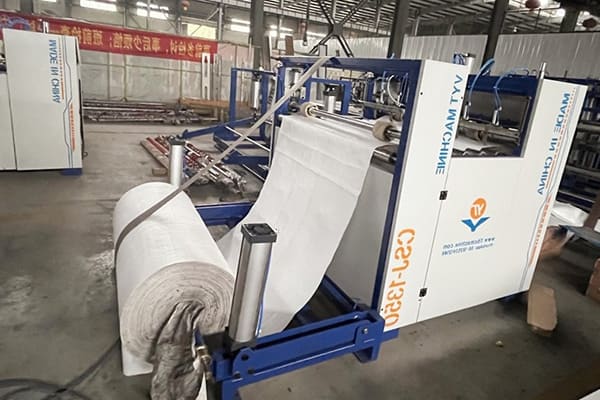In recent years, sustainability has become a central concern across various industries, with manufacturing being no exception. As environmental consciousness continues to grow, companies are increasingly seeking ways to minimize their ecological footprint. The bulk bag manufacturing sector, which produces large, flexible containers for transporting and storing goods, is no stranger to this trend. A pivotal innovation in this sector is the introduction of the Bulk Bag Cutting Machine, a technology that plays a crucial role in enhancing sustainability efforts.
The Growing Need for Sustainable Practices
Bulk bags, also known as FIBCs (Flexible Intermediate Bulk Containers), are widely used in industries ranging from agriculture to chemicals, where they serve as efficient and economical means of transporting large quantities of goods. However, the manufacturing and disposal of these bags have significant environmental impacts. Traditionally made from non-biodegradable polypropylene, these bags contribute to the growing problem of plastic waste. As global awareness of plastic pollution rises, the bulk bag industry faces increasing pressure to adopt more sustainable practices.
Bulk Bag Cutting Machines: A Game-Changer
Enter the Bulk Bag Cutting Machine—a piece of equipment designed to enhance the efficiency and sustainability of bulk bag production. These machines are engineered to precisely cut bulk bags with minimal waste, a feature that directly addresses one of the primary environmental concerns in the industry: material wastage.
In traditional manufacturing processes, cutting bulk bags often results in significant amounts of scrap material, much of which ends up in landfills. The Bulk Bag Cutting Machine reduces this waste by utilizing advanced technology that ensures each cut is optimized to use as much of the material as possible. This not only reduces the amount of scrap but also minimizes the need for new raw materials, contributing to a more sustainable production cycle.
Efficiency Meets Environmental Responsibility
One of the key advantages of Bulk Bag Cutting Machines is their ability to increase production efficiency while simultaneously promoting environmental responsibility. By optimizing the cutting process, these machines allow manufacturers to produce more bags in less time, reducing energy consumption and lowering the overall carbon footprint of the production process. This efficiency also translates into cost savings, making sustainable practices more economically viable for manufacturers.
Moreover, the precision of these machines ensures that bulk bags are produced to exact specifications, reducing the likelihood of defects and the need for rework. This further decreases material waste and energy usage, creating a ripple effect of sustainability throughout the manufacturing process.
Reducing the Environmental Impact
The adoption of Bulk Bag Cutting Machines also opens the door to more innovative uses of materials. For instance, manufacturers can experiment with recycled or biodegradable materials, confident that the precision cutting capabilities of these machines will allow them to maximize the utility of these alternative materials. This shift could significantly reduce the reliance on virgin polypropylene, leading to a decrease in the environmental impact of bulk bag production.
In addition, some manufacturers are exploring the possibility of repurposing the scrap material generated during the cutting process. By finding new uses for these offcuts, such as in the production of smaller bags or other plastic products, companies can further reduce their waste and move closer to a circular economy model.
The Future of Sustainable Manufacturing
As the bulk bag manufacturing industry continues to evolve, the integration of technologies like the Bulk Bag Cutting Machine will be essential in meeting the dual goals of efficiency and sustainability. These machines represent a significant step forward in the industry’s journey toward reducing its environmental footprint.
However, the journey doesn’t end here. Ongoing innovation and investment in sustainable technologies will be crucial in ensuring that the bulk bag manufacturing sector can keep pace with the growing demand for environmentally responsible products. By embracing these changes, the industry can not only enhance its sustainability but also contribute to the broader global effort to combat climate change and protect our planet for future generations.
In conclusion, the Bulk Bag Cutting Machine is more than just a tool for efficiency—it’s a catalyst for a more sustainable future in bulk bag manufacturing. Through its ability to reduce waste, optimize production, and support the use of alternative materials, it plays a vital role in the industry’s ongoing efforts to align with the principles of environmental responsibility.
Post time: 8月-15-2024


